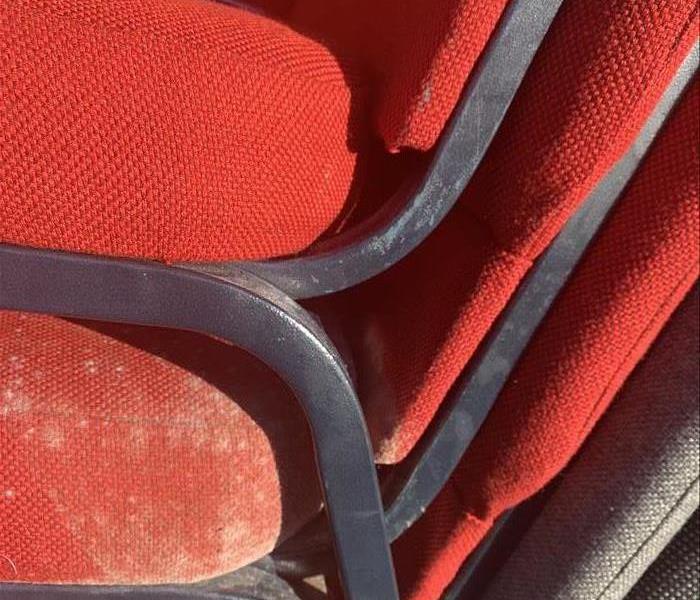Can Mold Grow On Your Furniture?
1/8/2020 (Permalink)
 Mold can look differently when it is on furniture and not always recognized at first. These chairs were given a deep cleaning to remove the mold.
Mold can look differently when it is on furniture and not always recognized at first. These chairs were given a deep cleaning to remove the mold.
Mold is not picky on where it grows and causes damage. In the right environment, mold can thrive on many types of furniture, including leather, wood, or fabric. Mold on furniture can be unsightly and ruin the integrity of furniture. Typically, mold is seen as white spots on wood or leather; on fabric furniture mold appears as dark brown or black spots.
It is possible to prevent mold from appearing on your valuables if the underlying cause is discovered. The first step is to inspect your furniture. What do the markings look like? Is there an odor or wetness to it? Safely answering these questions will help uncover whether you’re truly being affected by mold.
Next step is to survey the area the affected piece of furniture is in. Was the item recently in storage, like your attic? Did the storage space have any ventilation or light?
If the furniture was not pulled from a damp space, perhaps the air in the current room is too humid like moving furniture from an AC controlled room in your home to the patio or garage.
Consider the walls, ceilings and floors in the area as well. Is the room retaining moisture based on the ceiling or wall it shares with the next room? A living room ceiling may share a wall with your kitchen. This same wall may have pipes in it that run to your kitchen sink. If there is a leak or pooling present the walls are likely swelling with water, affecting the wood in it and possibly growing mold. Furniture in close proximity to a wall that has already been affected by mold can also start to see growth.
Once you’ve gone over a potential source, reflect on where you got the furniture from and its history. If you have purchased the piece second-hand, its likely it’s history is not well known and will need deep cleaning. If you do know the furniture’s history, question whether it has come into contact with a copious amount of water. Was there a recent flood or leak in your house? Did the water touch the furniture for a long period of time? Think of damp clothes you allow to sit without drying for too long. These clothes end up smelling and may become damaged. That is because they begin to grow mildew and much like mildew, mold will quickly cling to any material that is left wet. If your furniture was involved in a flood and improperly cared for, with no extensive drying process, this may be an answer to your mold growth.
The last step is to contact a professional. If you have the faintest hint that mold is indeed growing on your furniture, you will need some serious help. The items will need to be thoroughly dried and cleaned with equipment and solutions only a restoration company could possess. You will also benefit from a home inspection. This will ensure whether the issue is rooted deeper in your home.
Your furniture is what makes your home. It should be clean and mold free!

 24/7 Emergency Service
24/7 Emergency Service